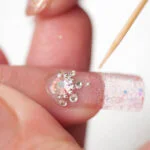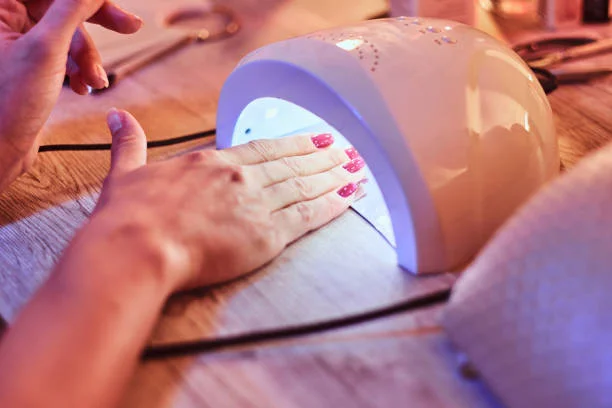Sustainable Beauty: Biodegradable Nail Polish
The cosmetics business has moved toward sustainability in recent years, affecting packaging and formulae. This trend is driven by developing nail studio materials and exceptionally eco-friendly, vivid nail paints. Biodegradable nail polishes are a greener alternative. These goods promise aesthetic benefits and a decreased environmental impact.
Biodegradable nail polishes degrade faster than standard ones. Traditional plasticizers are replaced with safer, plant-based replacements that give polish flexibility and durability.
Degradable nail polishes could increase quality and usefulness. Consumers like traditional polishes’ glossy sheen, multiple colors, and durability. These traits and ecological benefits must be harmonized to generate biodegradable solutions. VOCs in the solvent, which makes polish more straightforward to apply and dry, pollute the air. Water-based polishes provide lower VOCs and odors but poorer coverage and easier peeling.
Nail polish colorants are similarly tricky. Traditional colorants may contain metallic and other hazardous elements. Many biodegradable polishes use natural pigments, which limit shade range and intensity. Pigment technology and micronized mineral colorants are closing this gap, enabling safer, biodegradable, brighter color palettes.
Another essential consideration is the durability of biodegradable nail polish. Traditional nail paints employ synthetic film formers for durability. However, biodegradable polishes must use natural or synthetic materials that disintegrate faster. Biopolymers that perform like film formers without the environmental impact are being studied. This research is vital for consumer happiness and market viability.
Beyond shine, sustainability is essential in packaging. Many companies are switching to recycled, biodegradable, or glass bottles to lessen their environmental effect. Applicators and brushes are also changing, with more companies using FSC-certified wood handles and biodegradable bristles.
Trends demonstrate that customers prefer eco-friendly beauty items, including nail paint. Innovative biodegradable nail polish brands are getting great feedback, especially from environmentally conscious younger consumers. These consumers want environmentally friendly products and information about ingredients and manufacture.
Biodegradable nail polishes are also used due to marketing. Brands must inform consumers about these items’ environmental and health benefits. Campaigns generally promote nail paints without harsh ingredients as safer for everyone, especially pregnant women and children who may be sensitive to nail polish fumes.
Regulatory organizations are also paying more attention to nail polish formulations as the market grows. This inspection prevents greenwashing and promotes industry sustainability by verifying biodegradability and eco-friendliness claims.
Chemists and product developers keep improving the performance and color diversity of biodegradable nail polish. Bio-based solvents and natural plasticizer replacements could lessen these items’ environmental impact.
Advances in biodegradable nail paints are projected to boost quality, longevity, and appeal. Biodegradable nail polish will become more popular as consumers become more environmentally concerned, helping create a more eco-friendly beauty business. This transformation is not a passing trend but a significant effort to reduce the ecological impact of personal care products and improve individual and planetary well-being.
Nail Care: Water-Based vs. Solvent-Based Polishes’ Environmental Impact
For environmental reasons, the beauty sector, especially nail care in nail studios, is undergoing significant changes. Growing consumer demand for beauty and ecological protection goods is driving this transition. Water-based and solvent-based nail paints are used in beauty routines. Each variety has unique traits and environmental impacts worth studying.
With their longevity, high gloss, and wide color range, solvent-based nail polishes are the industry standard. VOCs such as toluene, butyl acetate, and ethyl acetate are the primary solvents in these polishes. These chemicals are chosen because they dissolve nitrocellulose, a film-forming ingredient that gives nail polish its lustrous appearance. VOCs pose serious environmental and health risks. VOCs create ground-level ozone and photochemical haze. Health risks for users and nail studio staff include respiratory difficulties and neurotoxicity.
Water-based nail polishes were created in response to environmental concerns. Water is the primary solvent in these polishes, reducing VOCs during application and drying. Due to their lower VOC level, water-based polishes are safer and more environmentally friendly in poorly ventilated settings. Water-based solutions prevent formaldehyde, toluene, and dibutyl phthalate in solvent-based alternatives.

Despite their environmental benefits, water-based polishes have been criticized for their performance. They have traditionally lagged behind solvent-based polishes in durability, color brilliance, and application. Early formulae were known to crack and peel, which deters consumers who want long-lasting wear. Recent advances in polymer chemistry and formulation have begun to close this gap. Modern water-based polishes are competitive with solvent-based ones in drying time, adherence, and gloss.
The environmental impact of both polishes depends on their manufacturing process. Solvent-based polishes require energy and attention to collect and dispose of solvents. The solvents can catch fire and explode during manufacture, requiring strict safety precautions. In contrast, water-based polishes are made at lower temperatures and use less energy, improving their environmental impact.
Nail polish disposal is another environmental issue. Flammable and toxic solvent-based polishes constitute a hazardous waste. This categorization requires particular disposal methods like incineration or unsafe waste landfilling, which have significant ecological footprints. While acrylic polymers and other synthetic components require cautious disposal, water-based polishes are less harmful and may be treated more sustainably.
Consumer education and awareness are critical to sustainable nail care uptake. Many must know that water-based and solvent-based polishes have different environmental impacts. Manufacturers should disclose product ingredients and ecological effects to assist consumers in making better decisions. Consumers demand greener formulations by choosing items with little environmental impact, prompting producers to innovate.
Water-based and solvent-based nail polishes are debated for customer choice and regulatory reasons. Governments and environmental organizations may need to develop environmentally friendly product standards and regulations. Limiting nail polish VOCs can lead to less volatile chemicals.

In conclusion, choosing between water-based and solvent-based nail polishes requires balancing environmental implications, performance, and consumer preferences. Formula efficacy and environmental safety will undoubtedly improve as the industry evolves, defining nail care’s future. Chemists, producers, consumers, and regulatory authorities must work together to ensure that beauty standards do not harm the environment. Sustainable beauty is a necessity for environmental protection, not just a trend.
The beauty industry pursues eco-friendly nail care solutions through new research and customer involvement. Water-based nail polishes now contain innovative bio-adhesives and natural plasticizers to match solvent-based products’ high-quality finish and durability. Consumers want sustainable products without sacrificing performance. Thus, these developments are decreasing the gap between the two kinds of polish.
The environmental benefits of water-based polishes and increased public knowledge are changing consumer choices. More buyers choose eco-friendly items, encouraging producers to use greener production, packaging, and waste management. However, obtaining solvent-based polishes’ long-lasting wear and aesthetic brilliance remains difficult.
Manufacturers are motivated to develop water-based formulas as restrictions tighten, and demand for eco-friendly products rises. This market shift will improve nail care product sustainability and worldwide beauty practices. Eco-friendly nail studios and home improvements can help reduce the environmental impact of our beauty routines.









Leave a Reply